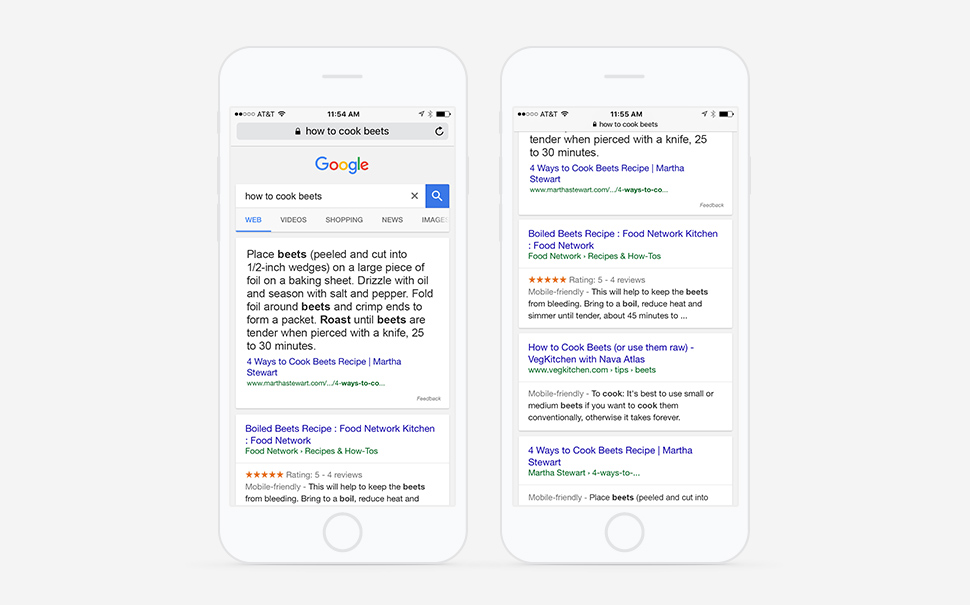The Bad “Beet” in Search

There’s nothing new about Google’s tendency to go a bit rogue and do off-the-cuff search and social experiments. Being the monster that they are, they definitely give the feeling of asking for forgiveness rather than permission, literally. I’ve noticed for a little while now, when performing a search for a specific question or request, Google is serving this with an actual response. This response is something I felt inclined to highlight as well as how I see this as a bad “beet” for so many in the results.
Companies and web-masters devote limitless resources to the never-ending effort of developing content that resonates with their audience, in hopes that they’ll attract a reader or customer for their products and services. One experience I encountered recently was when I was looking for ideas on how to cook beets.Doing this on the fly, I had used my iPhone to perform the search and was surprised to see how the results were displayed.

You’ll notice the search up top for “How To Cook Beets,” and the first thing I see, taking up close to 75% of the browser window, is a response. At first glance this looks and feels like a response from Google directly, but on further review you can see the URL for a result from www.marthastewart.com which gets even better when you continue the scan. The result in the #1 position, if you don’t take Google’s response, is a www.foodnetwork.com result.
Now, here you can see the Martha Stewart result was actually the #3 result behind the Food Network and Veg Kitchen, which is the main point of this post and why I wanted to highlight this experience.
How is Google determining that, 1.) they are going to highjack Martha Stewart’s result and use it as a response of their own, potentially steering someone away from a visit to the article page? And 2.), how does Google determine Martha Stewart’s result to be the result to display as their own if it’s only the 3rd most relevant result?
It’s a puzzling thing understanding how a result, that is deemed as only the 3rd most relevant result, would be used by Google as their own highlighted response to a question.
You can see this type of example for most “How To” questions. Another found was “How To Make Guacamole” where the Google answer was taken from the #2 result rather than the #1.
It’s something that we’ll continue to research to understand how results are being treated differently, even though the results already determined show relevance to a term. We’ll also research to see if these change and are merely tests for Google to better determine relevance for a specific query.
I think the main takeaway from this investigation is that Google is Google, and they’ll do what they want. 🙂
